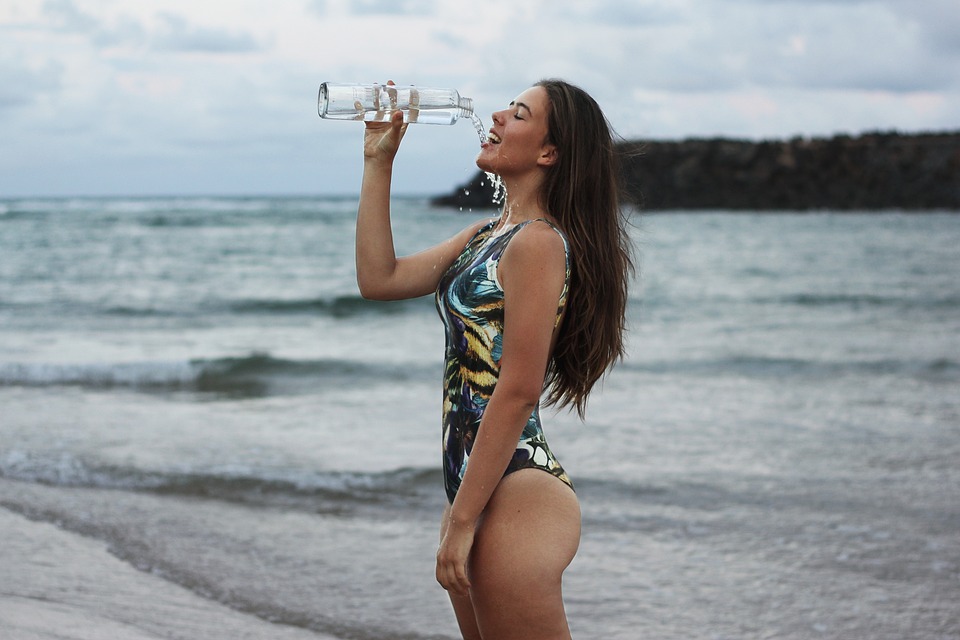Bikini Line Fungal Infection Treatment: Effective Remedies for Quick Relief
Are you dealing with an itchy, uncomfortable fungal infection in the Bikini Line area? Don’t worry, you’re not alone. Fungal infections in the Bikini Line area are more common than you may think, and they can be easily treated with the right remedies. In this article, we will explore the causes of Bikini Line fungal infections, the symptoms to watch out for, and most importantly, effective treatments that will provide you with quick relief.
The Causes of Bikini Line Fungal Infections
Fungal infections in the Bikini Line area, also known as tinea cruris or jock itch, are caused by a type of fungi called dermatophytes. These fungi thrive in warm, moist environments, making the Bikini Line area an ideal breeding ground. Factors such as excessive sweating, tight clothing, poor hygiene, and sharing contaminated items can contribute to the development of these infections.
Recognizing the Symptoms
Before we delve into the treatments, it is important to identify the symptoms of a Bikini Line fungal infection. Typically, you may experience intense itching, redness, and a rash that extends from the Bikini Line to the inner thighs. The affected area may become scaly, and in some cases, blisters may form. If you notice these symptoms, it is crucial to seek treatment promptly to prevent the infection from spreading or becoming more severe.
Evidence-Based Treatments for Bikini Line Fungal Infections
Now that we have an understanding of the causes and symptoms, let’s explore the most effective treatments for Bikini Line fungal infections. It is important to note that these remedies are evidence-based and have been proven to provide quick relief.
1. Antifungal Creams
Topical antifungal creams are the go-to treatment for Bikini Line fungal infections. They contain active ingredients, such as clotrimazole or miconazole, that effectively combat the fungi causing the infection. These creams should be applied directly to the affected area, following the instructions provided. It is essential to continue using the cream even after the symptoms disappear to ensure complete eradication of the fungus.
2. Keeping the Area Clean and Dry
Maintaining good hygiene is crucial in treating and preventing Bikini Line fungal infections. Clean the affected area with a mild, fragrance-free soap and warm water. Avoid using harsh soaps or scrubs, as they can further irritate the skin. After washing, gently pat the area dry with a clean towel, ensuring that it is completely dry before applying any creams or clothing.
3. Loose-Fitting Clothing
Wearing loose-fitting clothing made from breathable fabrics, such as cotton, can help prevent and alleviate Bikini Line fungal infections. Tight clothing traps moisture and heat, creating an environment where fungi thrive. Opt for loose-fitting underwear and avoid synthetic materials that can trap moisture. Additionally, avoid wearing wet bathing suits for extended periods as they can contribute to the growth of fungi.
4. Over-the-Counter Antifungal Powders
In addition to antifungal creams, over-the-counter antifungal powders can be used to treat Bikini Line fungal infections. These powders contain ingredients such as miconazole or tolnaftate that help keep the area dry and prevent the growth of fungi. Apply the powder to the affected area after thoroughly drying it. This can provide additional relief and aid in the healing process.
5. Prescription Medications
In severe cases or when over-the-counter treatments do not provide relief, your healthcare provider may prescribe oral antifungal medications. These medications, such as fluconazole or itraconazole, work from within to eradicate the fungi causing the infection. It is important to follow your healthcare provider’s instructions carefully and complete the full course of medication to ensure complete recovery.
Conclusion
Bikini Line fungal infections can be uncomfortable and bothersome, but with the right treatments, quick relief is within reach. By using antifungal creams, maintaining good hygiene, wearing loose-fitting clothing, utilizing over-the-counter antifungal powders, and seeking prescription medications when necessary, you can effectively treat and prevent these infections. Remember, if the symptoms persist or worsen despite treatment, consult a healthcare professional for further evaluation and guidance. Take control of your Bikini Line health and embrace the comfort and confidence you deserve.
Most Asked Queries Concerning Bikini Line Fungal Infection Treatment
What is a Bikini Line fungal infection?
A Bikini Line fungal infection, also known as tinea cruris, is a common fungal infection that affects the skin in the groin area. It is characterized by red, itchy, and sometimes painful rashes that develop along the Bikini Line. This type of infection is caused by a group of fungi called dermatophytes, which thrive in warm and moist areas of the body.
Important information:
1. Bikini Line fungal infections are not caused by poor hygiene, but rather by a combination of factors such as excessive sweating, friction, and a weakened immune system.
2. These infections are more common in men than women, but can affect anyone who wears tight-fitting clothing or spends a lot of time in hot and humid environments.
3. It is important to seek treatment for a Bikini Line fungal infection to prevent the spread of the infection and alleviate symptoms.
What are the symptoms of a Bikini Line fungal infection?
The symptoms of a Bikini Line fungal infection may vary from person to person, but commonly include:
– Red, itchy, and inflamed skin along the Bikini Line
– Small, raised bumps or blisters that may ooze or crust over
– Burning or stinging sensation in the affected area
– Peeling or cracking of the skin
– Darkening or discoloration of the skin
Important information:
1. The symptoms of a Bikini Line fungal infection can be similar to other skin conditions, so it is important to consult a healthcare professional for an accurate diagnosis.
2. Scratching or picking at the affected area can worsen the symptoms and increase the risk of spreading the infection to other parts of the body.
3. If left untreated, a Bikini Line fungal infection can persist for weeks or months, and may spread to the inner thighs, buttocks, or genitals.
How is a Bikini Line fungal infection diagnosed?
A healthcare professional can diagnose a Bikini Line fungal infection by examining the affected area and taking a medical history. In some cases, they may also perform a skin scraping or culture to confirm the presence of fungal infection.
Important information:
1. It is important to provide your healthcare professional with as much information as possible about your symptoms and medical history to ensure an accurate diagnosis.
2. Sometimes, additional tests may be required to rule out other skin conditions that may have similar symptoms.
3. Self-diagnosing and self-treating a Bikini Line fungal infection without proper medical guidance can lead to ineffective treatment and potential complications.
What are the treatment options for a Bikini Line fungal infection?
Treatment for a Bikini Line fungal infection typically involves antifungal medications, either in the form of topical creams or oral medications. The choice of treatment depends on the severity and extent of the infection.
Important information:
1. Topical antifungal creams are usually the first Line of treatment for mild to moderate infections. These creams are applied directly to the affected area and are typically used for a specified duration as directed by a healthcare professional.
2. In more severe cases or when the infection does not respond to topical treatments, oral antifungal medications may be prescribed. These medications work from within the body to combat the fungal infection.
3. It is important to complete the full course of treatment, even if the symptoms start to improve, to ensure complete eradication of the infection and prevent recurrence.
How can a Bikini Line fungal infection be prevented?
Preventing a Bikini Line fungal infection involves maintaining good hygiene and taking certain precautions to reduce the risk of fungal overgrowth in the groin area.
Important information:
1. Keep the Bikini area clean and dry, especially after sweating or swimming. Use mild, fragrance-free soaps and avoid harsh cleansers that may irritate the skin.
2. Wear loose-fitting, breathable underwear made of natural fabrics like cotton to allow air circulation and reduce moisture buildup.
3. Avoid sharing personal items such as towels, clothing, or razors with others to minimize the risk of spreading or acquiring fungal infections.
Misconception 1: Only women can get Bikini Line fungal infections
One common misconception about Bikini Line fungal infections is that only women can get them. While it is true that women are more prone to developing these infections due to the moist and warm environment created by tight clothing and shaving, men can also be affected.
Misconception 2: Shaving causes Bikini Line fungal infections
Another misconception is that shaving is the primary cause of Bikini Line fungal infections. While shaving can contribute to the development of these infections by creating small cuts and irritating the skin, it is not the sole cause. Fungal infections can occur due to various factors, including excessive sweating, wearing tight clothing, and poor hygiene.
Misconception 3: Over-the-counter creams can effectively treat Bikini Line fungal infections
Many people believe that over-the-counter creams can effectively treat Bikini Line fungal infections. While these creams may provide temporary relief from symptoms such as itching and redness, they are not usually strong enough to completely eliminate the infection. It is important to seek medical advice for proper diagnosis and treatment.
Misconception 4: Bikini Line fungal infections are always sexually transmitted
Some individuals mistakenly believe that Bikini Line fungal infections are always sexually transmitted. While it is possible to contract a fungal infection through sexual contact, it is not the only way these infections are transmitted. Fungi thrive in warm and moist environments, and they can be easily spread through shared towels, clothing, or by coming into contact with contaminated surfaces.
Misconception 5: Natural remedies are sufficient for treating Bikini Line fungal infections
Another misconception is that natural remedies alone are sufficient for treating Bikini Line fungal infections. While some natural remedies, such as tea tree oil or apple cider vinegar, may have antifungal properties and provide temporary relief, they may not be enough to completely eradicate the infection. It is important to consult with a healthcare professional for proper diagnosis and treatment options.


